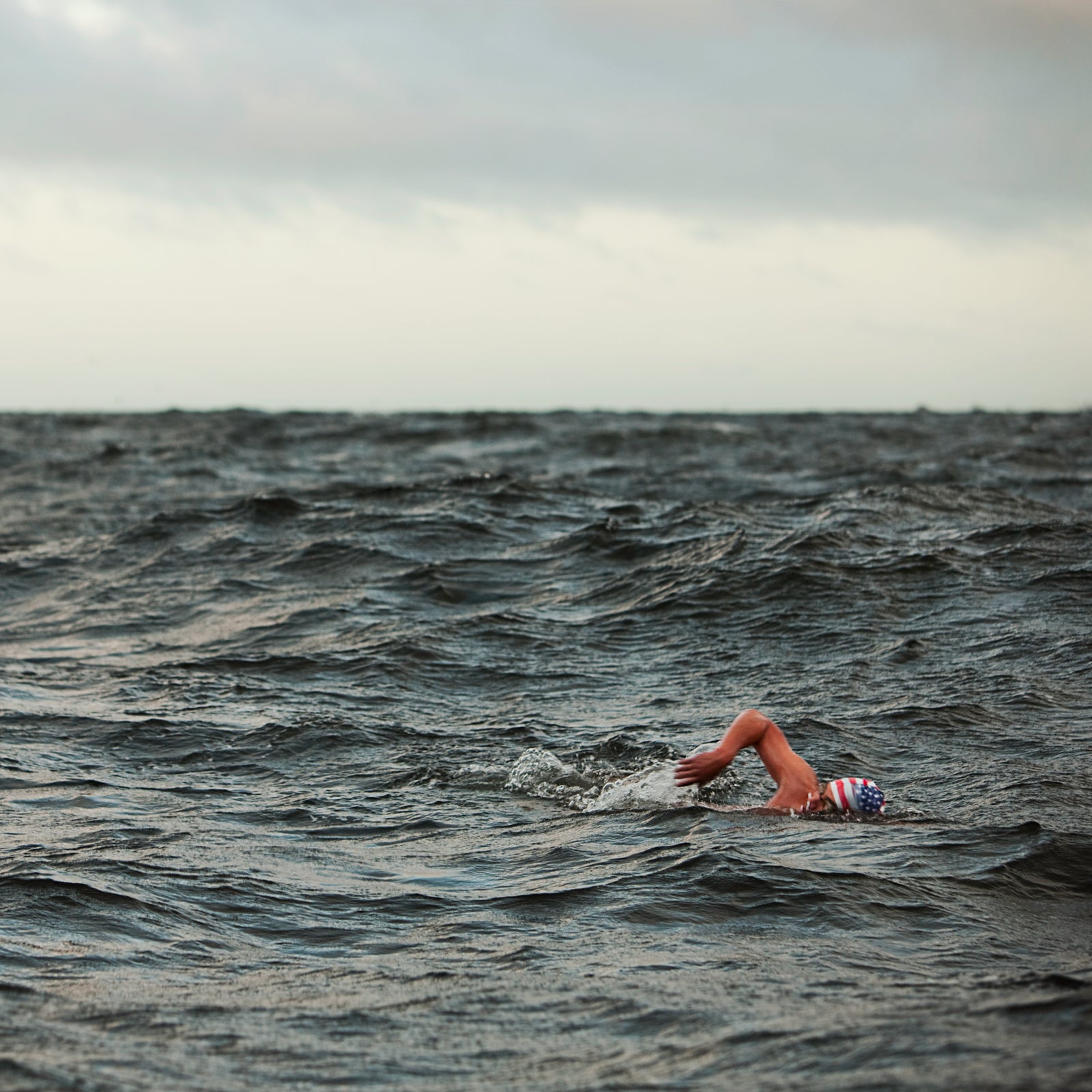Thanks to��wide-ranging temperatures, murky water, and strong waves, open-water swimming is more thrilling,��and physically demanding, than pool swimming. But the same factors that make the outdoor sport such an exciting, intense workout can also make it pretty terrifying, especially for the first-timer. “It’s quite a surreal feeling,” says Jarrod Evans, head coach of the U.S. men’s��triathlon team at the 2016 Rio Olympics.
While there’s no replacement for swimming��in the open water,��says , founder and director of the Open Water Swim Academy in San Diego, there are certain skills you can build in the pool��that will boost your competence and confidence. We asked three coaches for advice on making the transition from a pool to��the ocean—or a lake, reservoir, or river—easier and more enjoyable.
Build Your Endurance
Before suiting up for an open-water workout, you should be able to swim at least two to three times that distance nonstop in the pool, Simonelli says. Open-water distances typically get elongated due to��shifting conditions, so a mile in the ocean will take more time—and feel more challenging—than a mile in the pool. in the pool will ensure fatigue won’t become a factor when your planned 30-minute open-water swim��turns into a 55-minute tussle with the waves.
If you start to feel overtired during practice endurance swims, try what Simonelli calls “resting in motion,” i.e., continuing to swim at the same tempo while pulling less forcefully with each stroke. This will allow you to take a mini breather while still moving forward, a vital skill when charting open waters.
Perfect Alternate Breathing
Most swimmers have a preferred breathing side, but once you hit open water, reliance on unilateral breathing can spell trouble. Variability in the wind, waves, swell, and current can make breathing unpleasant, inadvisable, and, in some cases, impossible if you continue to favor one side. “Don’t assume you can rely on a pattern like you do in the pool,” Simonelli says. Learning to breathe comfortably on��both sides and holding your breath for several strokes can reduce panic in the event that you have to skip a breath or get a face��full of water.
Build this skill by practicing irregular breathing as you swim laps: take three breaths on your right side, then five on the left, then eight on the right, then four on the left, for example. Or��breathe every stroke and then hold your breath for several strokes.
Turn Without the Wall
In open water, changing directions or stopping and then starting again can be tough—there’s no wall or bottom surface to push off of. Practice maneuvering without that support by doing a set in the pool��where you stop short of the wall and tumble-turn at the flags, says Evans.
Ditch Your Goggles
Most open water will be cloudier than your local pool. In some cases, you may only be able to see just a few inches in front of you, which can make for a strange sensory experience. Simulate these conditions��by lifting your goggles onto your head and swimming with your eyes closed, suggests Dave Scott, a six-time Ironman World Champion and triathlon coach based in Boulder, Colorado. Take six or ten strokes, then, while pausing and treading water mid-lane, put your goggles back on and take another six to ten strokes. Continue this pattern for several lengths, alternating different stroke speeds and breathing patterns. The goal is to teach yourself that, even with limited to no visibility, you can still keep moving forward without sacrificing good technique and breath control.
Vary Your Stroke
Varying conditions call for varying stroke styles. In especially choppy water, doing shorter, shallow strokes rather than long, deep arm pulls can help you stay closer to the surface of the water and avoid getting tossed with the waves, Simonelli��says. In more serene conditions, or if the swell is pushing you from behind, longer, deeper pulls can be more efficient.
Practice this variation in the pool with a set that alternates between long, smooth, deep arm pulls, and short, shallow pulls. Bonus: Mixing up your stroke can also alleviate the pressure, particularly on your shoulders, that can come from the repetitive motion of a longer open swim, Simonelli adds.
Practice Sighting
Oceans don’t have backstroke flags, lakes don’t have lane lines. This means you need to master the skill of sighting—i.e., regularly searching for landmarks mid-swim to ensure you’re moving in the right direction in a body of water.
As you take a stroke, turn your head to the side like you would to breathe. Then��rotate your head forward, lifting your��goggles out of the water to gaze ahead. Your neck and chin should stay submerged, Scott explains, and the head lift should be as small as possible,��Simonelli��says. Your lower body may naturally drop, so combat that by kicking extra hard. As you sight, exhale (instead of inhaling) or hold your breath, Simonelli adds. This will decrease your odds of sucking down water as you rotate your head forward.
Practice sighting in the pool with large objects—like a tree��or a nearby building—and then increase��the challenge with smaller objects (a pine cone, perhaps,��or a pair of flip-flops), Scott says. Attempt two to three sighting strokes in a row and then resume regular swimming, Simonelli says.
Learn How to Relax
The temperature of open water varies greatly, depending on the time of year, geographic location, and size of the body of water, and ranging from the low thirties��to��the��nineties (and above). Water in the upper seventies��and eighties��is pretty easy to slip into, but colder temperatures, like those in the Pacific Ocean or some of the Great Lakes,��can be jarring, both mentally and physically.
When most folks jump into cool water, their muscles tighten and their breathing can become erratic and shallow, Scott says. And though wearing a wetsuit can significantly reduce that response, it won’t eliminate it entirely.��Overcoming a game-ending panicky feeling “starts and ends with the breathing,” Simonelli says.
To steel yourself for the initial shock, take cold showers or submerge yourself in cold baths while steadily inhaling, which will help you relax into the chill. Though standing or sitting in icy water will not replicate the experience of swimming, it could make those first moments of your open-water swim less taxing, Simonelli says.
Being successful in open water “all stems back to relaxation,” Scott says. As you take these tips from your chlorinated rectangle to the great outdoors, keep the focus on your breath—and enjoy the exhilarating ride.


